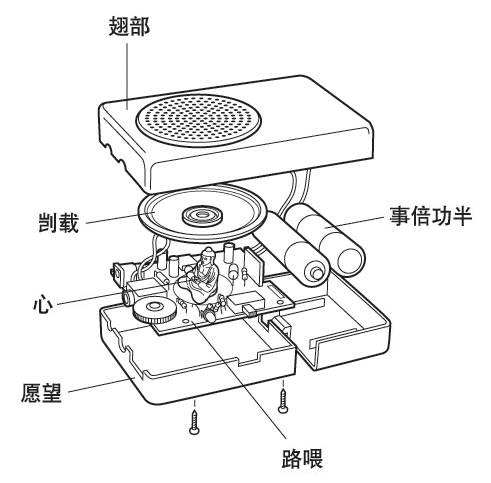 Flickr image courtesy of Merlin @ 43Folders
Flickr image courtesy of Merlin @ 43Folders
In 2005, inspired by the small music boxes used to play Buddhist chants at temples in China, Christiaan Virant and Zhang Jian, collectively known as Beijing’s electronic music group FM3, had 500 little boxes with 9 looping samples of their music made and sold them through boutique outlets for $23 a pop. Thanks to the interest of fellow artists like Brian Eno, the Buddha Machine got a jumpstart and by November it was a gift idea in the New York Times. Hardly more than a year later, there’s been a remix album, a flickr page for devotees, t-shirts, lapel pins, and a mashup game using multiple Buddha Machines (see the demonstration film on YouTube). Now the creators are debuting a porcelain model, with a mythical back story about the Emperor’s Buddha Machine. According to Virant, they’ve sold over 20,000 Buddha Machines and it’s still going strong…
 Buddha Machine versus its Grandpa, courtesy of PotatoPotato
Buddha Machine versus its Grandpa, courtesy of PotatoPotato
Dubbed the anti-iPod because of its passing similarity, meagre selection, low-tech capability and of course suggestion of the Buddhist rejection of the material, the Buddha Machine taps perfectly into that “anti-marketing” dollar Bill Hicks used to talk about. The collective Chinese reaction, from those who have heard of it, seems to be a collective “huh”(Chinese), followed by a “wait, $23????” Considering that the real Buddhist chant players can be picked up for far less than a dollar online, it’s hard to argue with that.
There’s two issues here worth noting: Westerners are paying alot of money for something being merchandized as Buddhist, and the difficulties that Chinese companies face in exploiting these kinds of opportunities. One issue is the cultural difference – the “anti-iPod” hook may not be so obvious to a Chinese company, since the iPod does not have the quite the same impact in China as elsewhere. Another problem is that Chinese manufacturing tends not to look favorably on small orders, for high-priced boutique items or otherwise. As Christiaan Variant mentions in an interview at BoomKat:
“This is China, where factories usually take orders in the range of 100,000 to a few million! So when we wanted to make 500, no one would deal with us. Most factories tried to convince us that our idea was pointless or would never sell. But we persisted, did a lot of explaining, pleading and ego-massaging, and eventually one factory took on the task. Now, of course, they are really into the product and just can’t believe it has been so successful.”
Another issue is technical capability. Though China (particularly Dehua, Fujian, near Mutant Palm HQ) has an enormous amount of porcelain manufacturers, FM3 couldn’t make it there:
“Instead, we had factory managers at China’s biggest kilns tell us our plan was “impossible.” Others told us that it was “beyond the realm of modern technology” to copy our humble little plastic box. We were told to seek out the industrial porcelain plants in Japan or Germany – the “only places on the planet” where they had the knowledge to copy a Buddha Machine.”
And so the porcelain model was made in Berlin. China is not, it turns out, the best at making… china.
Chinese literate readers will note, as well, that the assembly diagram at the top of this post has some very strange Chinese words. 心 and 愿望 seem fine and appropriate, but 路喂,翅部,剀载,事倍功半? Well, it turns out that it was made by a Swiss designer who doesn’t know Chinese. But it does looks snazzy.
You can download and listen to uncompressed WAV files of the samples here.
